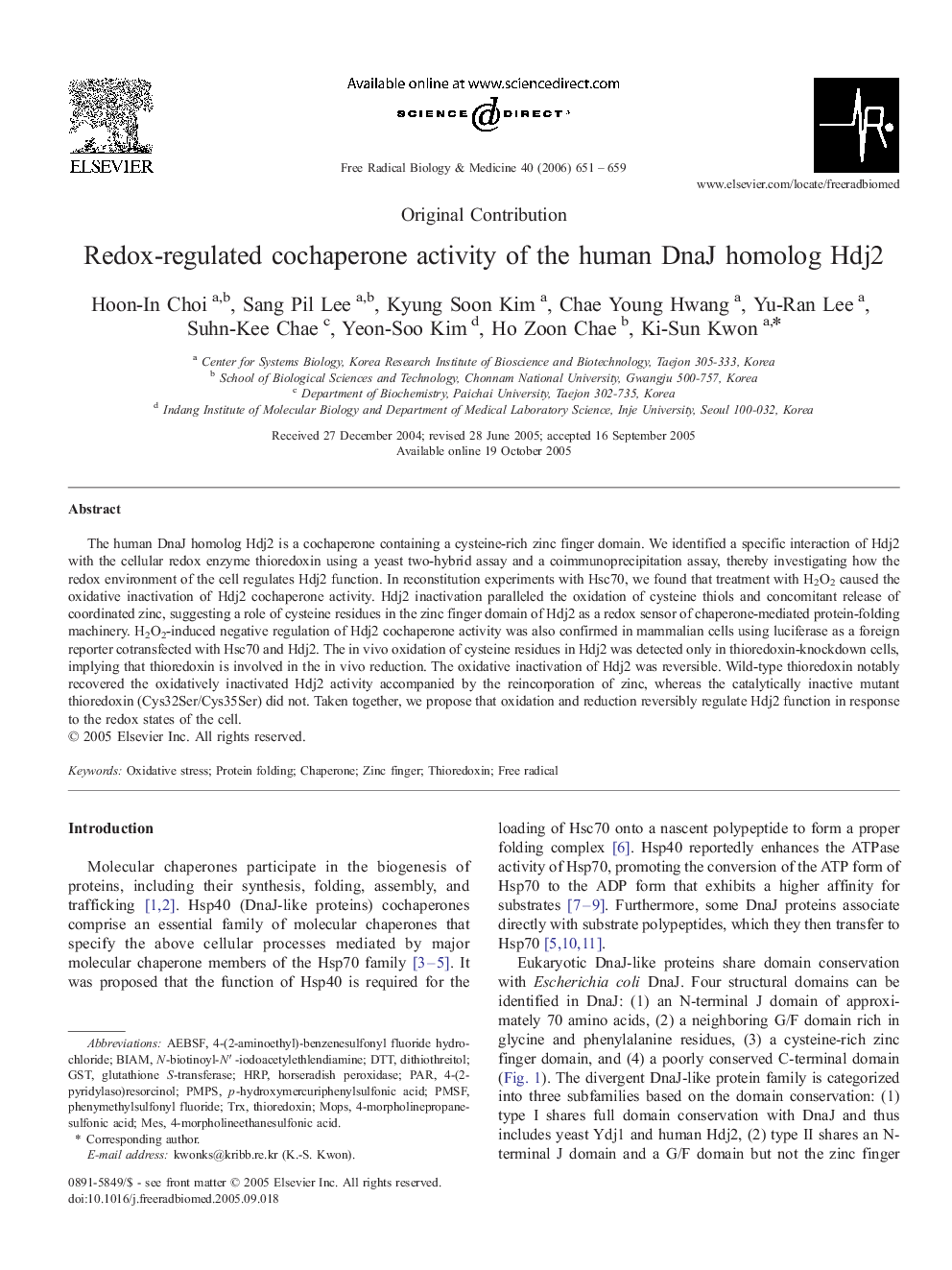| کد مقاله | کد نشریه | سال انتشار | مقاله انگلیسی | نسخه تمام متن |
|---|---|---|---|---|
| 1911733 | 1046830 | 2006 | 9 صفحه PDF | دانلود رایگان |

The human DnaJ homolog Hdj2 is a cochaperone containing a cysteine-rich zinc finger domain. We identified a specific interaction of Hdj2 with the cellular redox enzyme thioredoxin using a yeast two-hybrid assay and a coimmunoprecipitation assay, thereby investigating how the redox environment of the cell regulates Hdj2 function. In reconstitution experiments with Hsc70, we found that treatment with H2O2 caused the oxidative inactivation of Hdj2 cochaperone activity. Hdj2 inactivation paralleled the oxidation of cysteine thiols and concomitant release of coordinated zinc, suggesting a role of cysteine residues in the zinc finger domain of Hdj2 as a redox sensor of chaperone-mediated protein-folding machinery. H2O2-induced negative regulation of Hdj2 cochaperone activity was also confirmed in mammalian cells using luciferase as a foreign reporter cotransfected with Hsc70 and Hdj2. The in vivo oxidation of cysteine residues in Hdj2 was detected only in thioredoxin-knockdown cells, implying that thioredoxin is involved in the in vivo reduction. The oxidative inactivation of Hdj2 was reversible. Wild-type thioredoxin notably recovered the oxidatively inactivated Hdj2 activity accompanied by the reincorporation of zinc, whereas the catalytically inactive mutant thioredoxin (Cys32Ser/Cys35Ser) did not. Taken together, we propose that oxidation and reduction reversibly regulate Hdj2 function in response to the redox states of the cell.
Journal: Free Radical Biology and Medicine - Volume 40, Issue 4, 15 February 2006, Pages 651–659